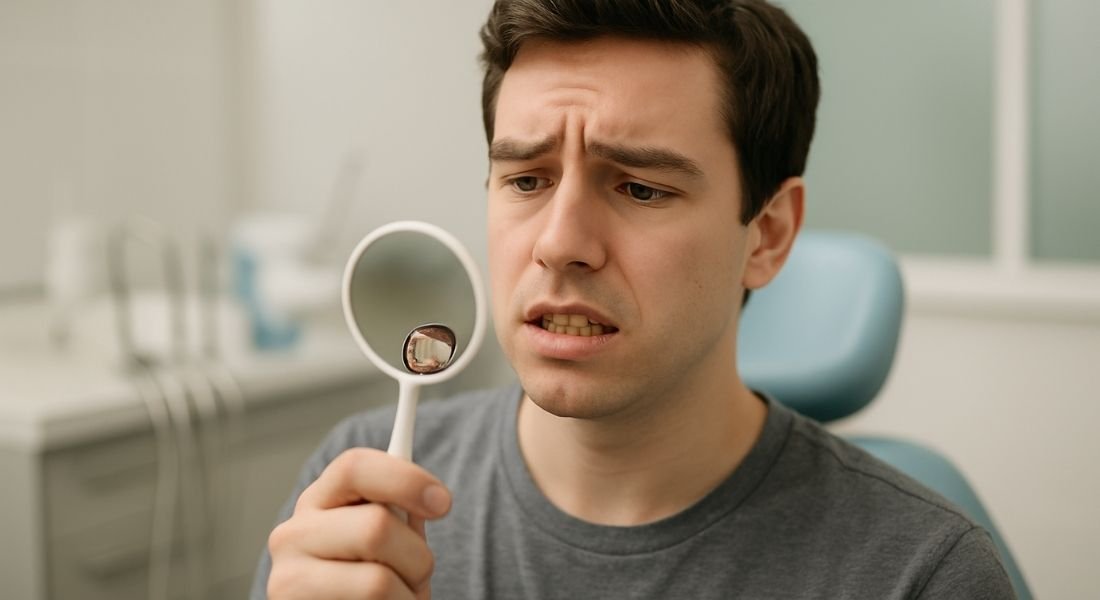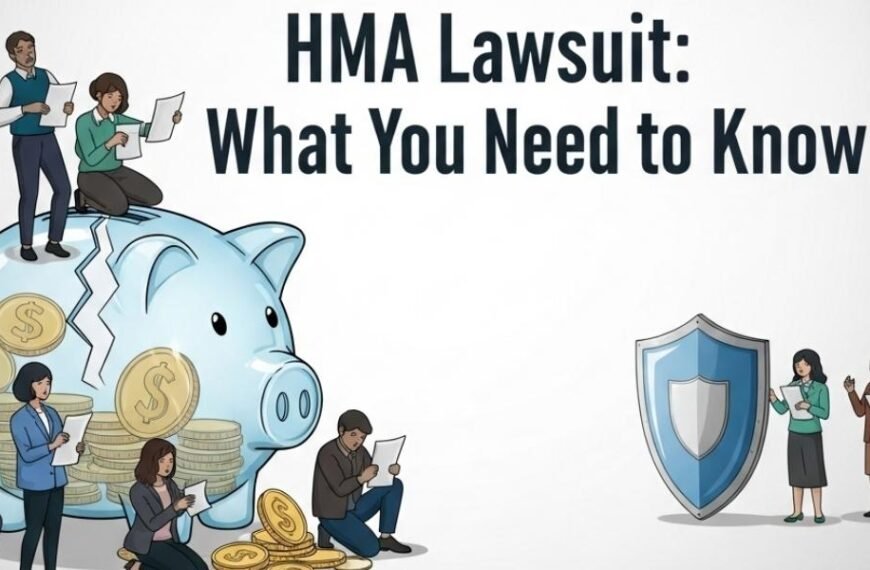Crooked teeth are more common than you might think. From kids to adults, many people deal with teeth that are not perfectly aligned. And while crooked teeth can be charming and unique, they can also lead to issues with oral health, confidence and even digestion.
So, what causes crooked teeth in the first place? And more importantly, what can you do to fix them whether for cosmetic reasons or comfort?
In this article, we’ll cover everything from causes and complications to the most effective ways to straighten crooked teeth naturally or with dental help.
What Are Crooked Teeth?
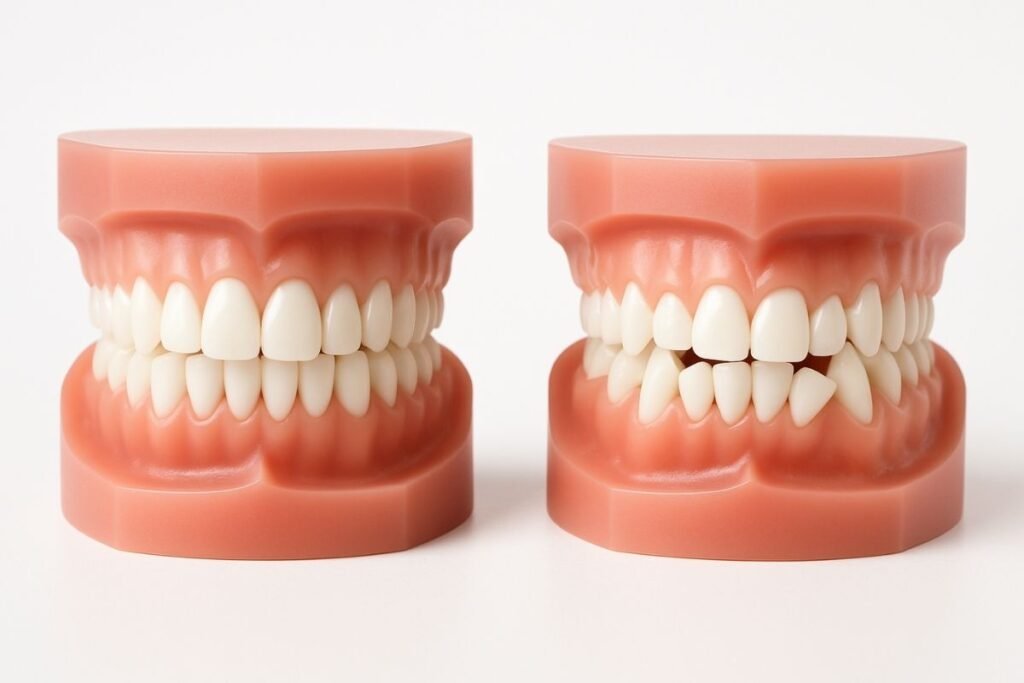
Crooked teeth simply refer to teeth that are not aligned properly in the mouth. Instead of forming a straight, even line, they may overlap, twist, angle inward or outward or appear crowded. Some people have just one or two crooked teeth, while others may have misalignment throughout their entire bite.
This condition can affect both baby teeth and permanent adult teeth. While baby teeth often fall out before serious issues arise, the alignment of those early teeth can influence how adult teeth come in.
Crooked teeth fall under a broader category known as malocclusion, which refers to any misalignment of the teeth or jaw. This includes underbites, overbites, open bites and crossbites. Crookedness is one of the most visible types of malocclusion and it often brings people to the dentist or orthodontist seeking help.
Why It Matters: The Real Impact of Crooked Teeth
At first glance, crooked teeth might seem like just a cosmetic issue but the effects go far deeper. When teeth are misaligned, they can create small pockets that are hard to clean properly.
This makes it easier for plaque and bacteria to build up, leading to gum disease, tooth decay and bad breath. Over time, this can lead to more serious dental problems, including periodontitis, which can affect the bone and tissue supporting your teeth.
Crooked teeth can also cause:
- Jaw pain and chronic headaches
- Uneven wear and tear on teeth
- Difficulty chewing or speaking clearly
- Strain on your temporomandibular joint (TMJ)
Beyond the physical effects, there’s an emotional aspect too. Many people feel self conscious about their crooked teeth and may avoid smiling in photos or social situations. Straightening your teeth can lead to better self esteem and more confidence in everyday life.
What Causes Crooked Teeth?
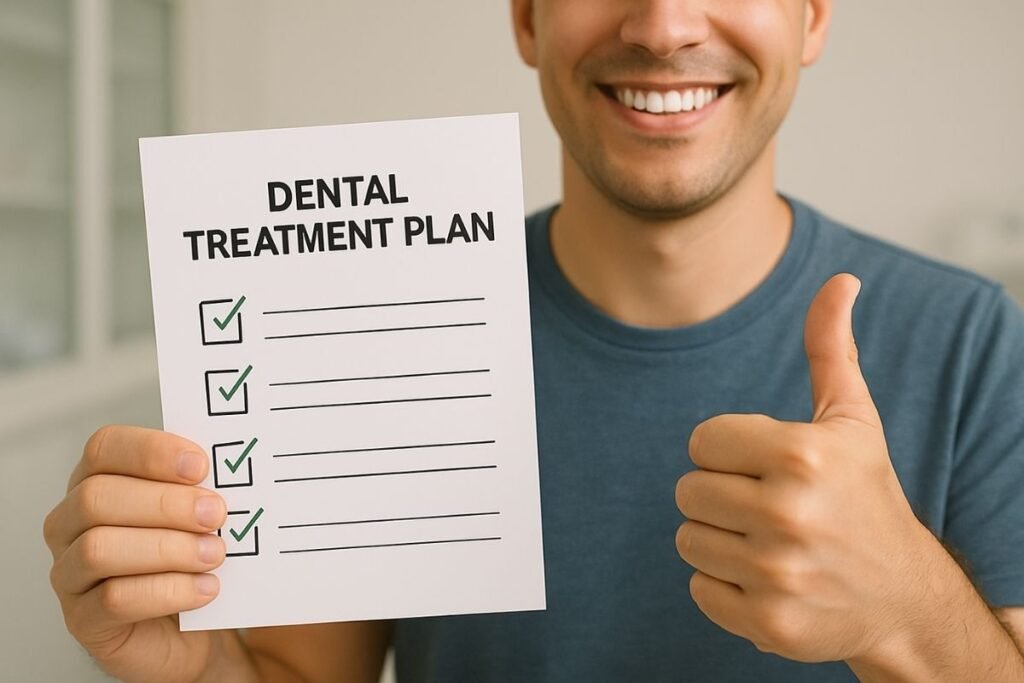
There isn’t just one reason teeth come in crooked. In fact, several factors can contribute to misalignment and they often begin in childhood.
Genetics and Family History
If one or both of your parents had crooked teeth, there is a good chance you’ll inherit that trait. Genetics determine not only the size and shape of your teeth but also the size of your jaw. A mismatch between tooth and jaw size can lead to crowding, gaps or misalignment.
Childhood Habits
Prolonged behaviors like thumb sucking, tongue thrusting or extended pacifier use can affect how baby teeth develop. These habits can push teeth out of alignment or even influence jaw growth over time.
Premature Loss of Baby Teeth
Losing baby teeth too early due to injury, decay or infection can cause nearby teeth to shift into the empty space. When the adult tooth comes in later, it may have less room and grow in crooked.
Poor Myofunctional Habits
Mouth breathing, tongue posture and improper swallowing patterns (like pressing the tongue against the teeth) can interfere with normal jaw and facial development, leading to misalignment.
Nutrition and Health
Nutritional deficiencies during early development may result in weaker dental structure or delayed growth, making teeth more vulnerable to shifting. Similarly, poor oral hygiene or chronic health issues can impact the development and position of teeth.
Jaw Size Changes in Modern Diets
Today’s soft, processed diets require less chewing compared to our ancestors. This has led to smaller jaws over generations, which means less space for teeth resulting in crowding and crooked alignment.
How to Fix Crooked Teeth: Your Options Explained
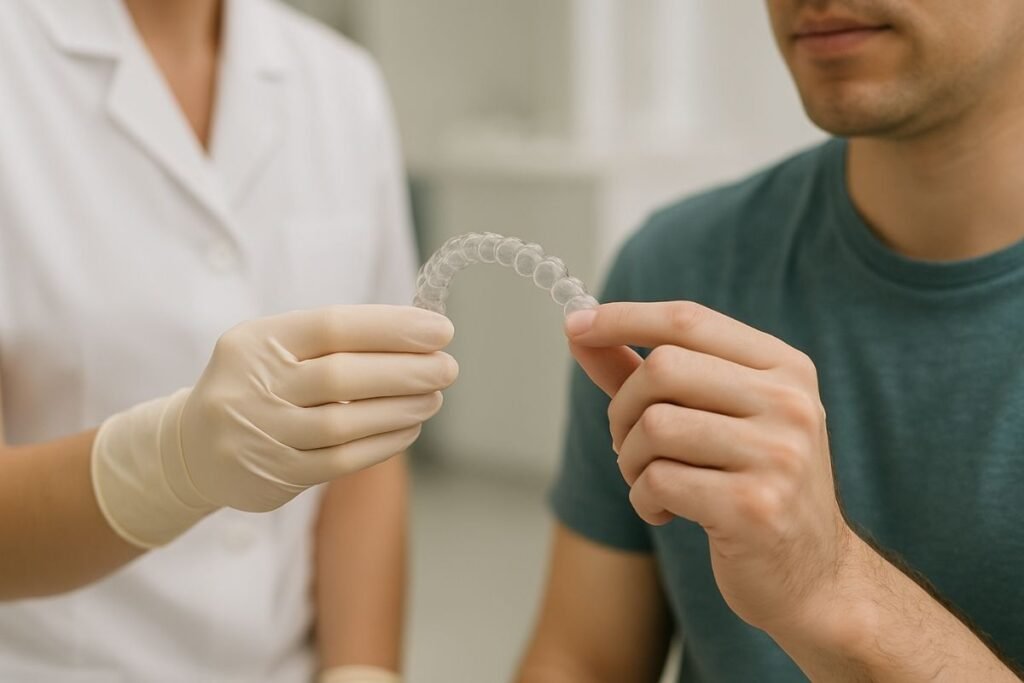
Whether you are dealing with a single misaligned tooth or a full set of crooked teeth, the good news is that several solutions exist. The best option for you depends on the severity of your case, your age, your goals and your budget.
Traditional Braces
Braces are the most well known solution for crooked teeth. They use metal brackets and wires to slowly move teeth into better alignment. Though they’re most commonly used in children and teens, adults can benefit too.
Modern braces are smaller, more comfortable and more efficient than those in the past. The treatment usually lasts between 18 months and 3 years, depending on the complexity.
Invisalign and Clear Aligners
Invisalign and similar clear aligners are popular among adults and teens who want a less noticeable option. These custom made, transparent trays gradually shift teeth into position and are removable for eating and cleaning.
They are best for mild to moderate misalignments and typically take 12–24 months to complete treatment.
Lingual Braces
Lingual braces work like traditional braces but are placed on the inside of the teeth, making them invisible from the front. They are more discreet but can be harder to clean and may feel more uncomfortable at first.
Veneers for Minor Crooked Teeth
For people with slightly crooked teeth and no bite issues, porcelain veneers can offer a quick cosmetic fix. Veneers are thin shells bonded to the front of the teeth to create a straighter appearance. While they don’t move the teeth, they can dramatically improve your smile’s look.
Dental Bonding
Like veneers, dental bonding can reshape slightly misaligned teeth using a tooth colored resin. It is a less expensive, non permanent option that works well for minor corrections.
Dental Implants to Prevent Future Misalignment
If you have lost a tooth, getting a dental implant can prevent surrounding teeth from shifting into the gap. This keeps your bite aligned and reduces the chances of developing crooked teeth over time.
Straightening Teeth Naturally: Is It Possible?
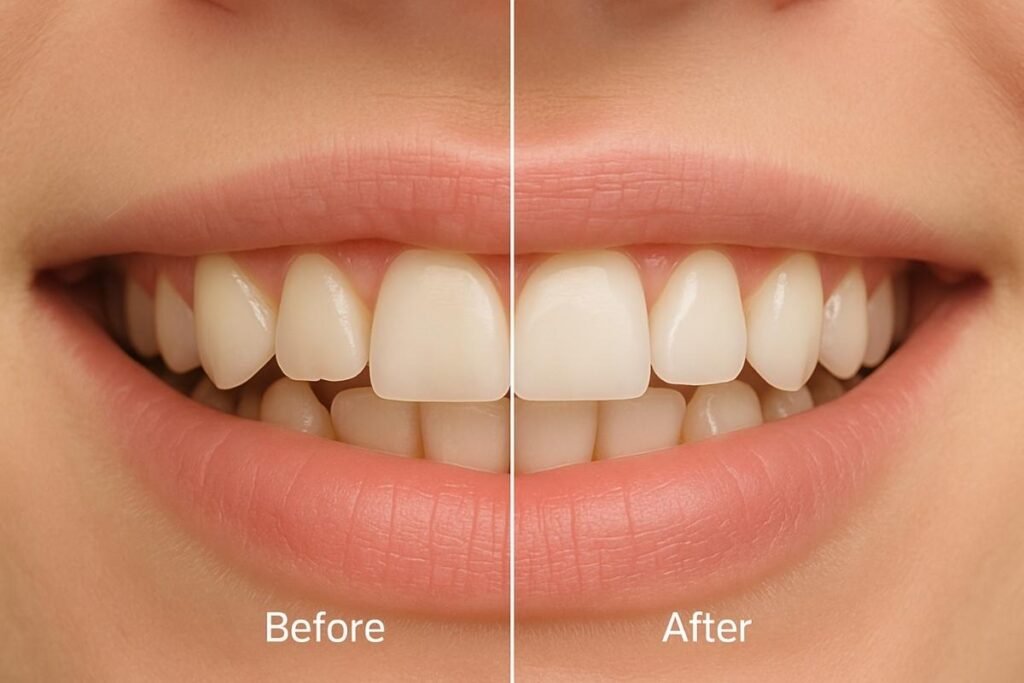
If you are looking for natural ways to help straighten your teeth or prevent further misalignment, there are a few strategies to consider.
Myofunctional Therapy
This type of therapy focuses on retraining the muscles of the face and mouth. Correcting improper habits like tongue thrusting or mouth breathing can support better jaw development and keep teeth aligned, especially in children.
Orthotropic Treatment
Orthotropics is a lesser known approach that emphasizes guiding jaw growth naturally in younger patients. Through proper posture, diet and breathing techniques, it aims to prevent or reverse crooked teeth by encouraging proper facial development.
Healthy Oral Habits
While they won’t fix crooked teeth, maintaining good habits can prevent them from getting worse:
- Brush and floss regularly
- Avoid using teeth as tools (e.g., opening packages)
- Wear a nightguard if you grind your teeth
- Visit your dentist for routine checkups
Final Thoughts
Crooked teeth may not always be a health risk, but if they affect your self esteem, ability to clean your mouth properly or cause jaw pain, it is worth exploring your options.
Modern treatments ranging from braces to Invisalign to veneers make it easier than ever to straighten teeth safely and effectively. And with growing awareness of how facial habits affect oral development, early intervention in kids can prevent future problems altogether.
In the end, the decision to correct crooked teeth is a personal one. But if it is something that bothers you or affects your well being, know that help is available and it is more accessible than ever.
FAQs
Can crooked teeth cause health problems?
Yes. Crooked teeth can lead to gum disease, tooth decay, jaw strain and even headaches. Misalignment can also make it harder to chew food properly, which affects digestion.
At what age should crooked teeth be fixed?
There is no set age, but the earlier the intervention, the better the outcome. Children as young as 7 can be evaluated for orthodontic issues. Adults can seek treatment too, especially with options like Invisalign.
Are crooked teeth genetic or caused by habits?
Both. Genetics play a large role in jaw size and tooth position, but childhood habits like thumb sucking or mouth breathing can also cause misalignment.
Can I fix crooked teeth without braces?
In some cases, yes. Veneers or dental bonding can improve the appearance of slightly crooked teeth. Myofunctional therapy may also help correct habits that lead to crooked teeth.
How long does it take to straighten crooked teeth?
Treatment time varies depending on the method and severity. Braces usually take 18–36 months, Invisalign takes about 12–24 months and veneers can be done in just a few visits.
Is it expensive to fix crooked teeth?
Costs range widely. Braces may cost $3,000–$7,000, Invisalign around $3,500–$8,500 and veneers $900–$2,500 per tooth. Many dentists offer payment plans or work with insurance to reduce out of pocket costs.

